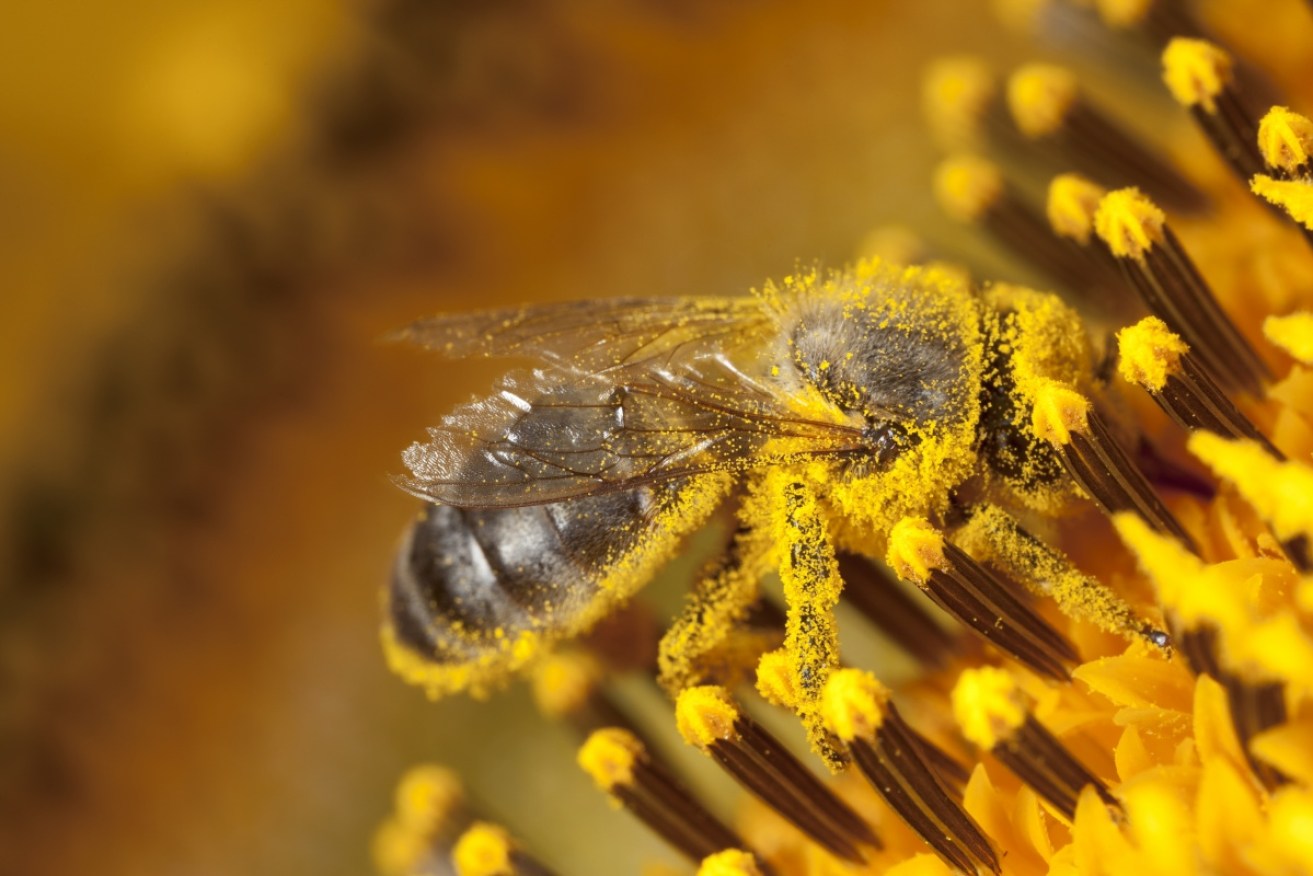NSW bee industry prepares for ‘devastation’ following new parasite arrival


Bees are vital for pollinating crops, meaning the varroa mite could ruin two industries. Photo: Getty
Honey producers say a ban on the movement of bees in New South Wales to contain the spread of a destructive parasite will be “devastating” for their small businesses.
Since Sunday night, a statewide emergency order has been imposed in NSW to control the movement of bees across the state and stop the spread of varroa mite.
Varroa mites are tiny, reddish-brown external parasites, and are the most serious pests for honey bees in the world.
Left untreated, the varroa mite will destroy the hive through colony breakdown and death.
Until last week, Australia was the only major honey-producing country free from the pests’ presence.
The varroa mite was detected on Friday at the Port of Newcastle, and the NSW Department of Primary Industries (DPI) emergency order means no bees are allowed to be moved statewide.
The NSW DPI estimates the parasite could create losses of $70 million a year if it becomes established in Australia.
Although the industry supports the DPI’s strong action, beekeepers and food producers say a prolonged lockdown or widespread varroa mite infestation will have devastating consequences.

A seemingly insignificant brown spot on the bee’s back, the varroa mite is a deadly threat to hives and agriculture. Photo: WA Agriculture Department
Struggling beekeepers facing devastation
“It’s going to be absolutely devastating,” Highland Honey co-owner Roger Easton said.
The NSW-based boutique honey producer has been reduced to just six hives from 20 following years of poor weather, pests and not enough money to feed his bees.
Mr Easton, who followed his son into beekeeping 15 years ago, said the NSW DPI doesn’t want any hives to be opened or moved as part of a lockdown to prevent the spread of varroa mites.
This leaves Mr Easton with just 500 kilograms of stockpiled honey.
He already sometimes pulls in just $50 per week in income, and the restrictions means he could be earning even less, spelling the death of his remaining hives, as their diet of sugar can cost about $15 per day.

Roger Easton at work with a Highland Honey hive. Photo: Highland Honey
As Mr Easton has been asked to report the locations of all of his hives to the NSW DPI, he feared a statewide mass extermination of bee hives may be on the cards, wiping out the state’s honey production industry for some time.
The DPI told The New Daily there has been no discussion about mass extermination of NSW’s commercial bee hives.
However, the organisation confirmed a total of 129 confirmed or potentially contaminated hives have been killed so far; six ‘sentinel’ hives (used to monitor for the deadly parasites), three privately owned hives, and 120 hives near Trangie, a small NSW town.
There are about 600,000 commercial beekeeping hives in total around Australia.
Producers left feeling uncertain and anxious
AgriFutures Australia data shows that one-third of Australian food that ends up on your plate relies on honey bee pollination.
The range of products depending on pollination includes, but is not limited to, almonds, macadamias, avocados, apples, pears, cherries and canola.
The pest that has just breached Australia’s famously strict biosecurity measures could put all these industries at risk.
The NSW DPI is still unsure of how the varroa mite managed to enter the country, and hasn’t given any indications of when the lockdown will end.
Almond Board of Australia CEO Tim Jackson said this is creating uncertainty about the almond industry’s pollination, which is scheduled in August.
He said NSW is the biggest supplier of hives for pollination in Australia.
“We need just under 300,000 hives for pollinating 18 million trees across three states,” Mr Jackson said.
“The varroa incursion is certainly creating a lot of uncertainty within the industry as to whether we’re going to get enough bees to pollinate the 2022-23 crop.”
The DPI’s estimated loss of $70 million is a massive sum, but it could be an under-estimation.
Mr Jackson said the almond tree crop currently at risk of lack of pollination is worth up to $1 billion alone.
As almond trees start blossoming in the first couple weeks of August, he said there is “no time to waste”.
AgriFutures Australia pollination and honey bee program manager Annelies McGaw said almond pollination, which involves more than a billion bees, is the biggest movement of livestock in Australia.
But bees are also essential for the pollination of other popular Australian produce such as cherries, apples and pears.
The unfolding issue in NSW is troubling on several fronts; Ms McGaw said NSW is home to the majority of the country’s commercial beekeepers, honey producers and pollination supplies of bees.
A Coles spokesperson told The New Daily the retailer doesn’t foresee any immediate impact to customer supply of honey products.
But while many large producers may have stockpiles at the ready, consumers could be hit by shortages or price hikes on a range of groceries in the future if the varroa mite spreads.








